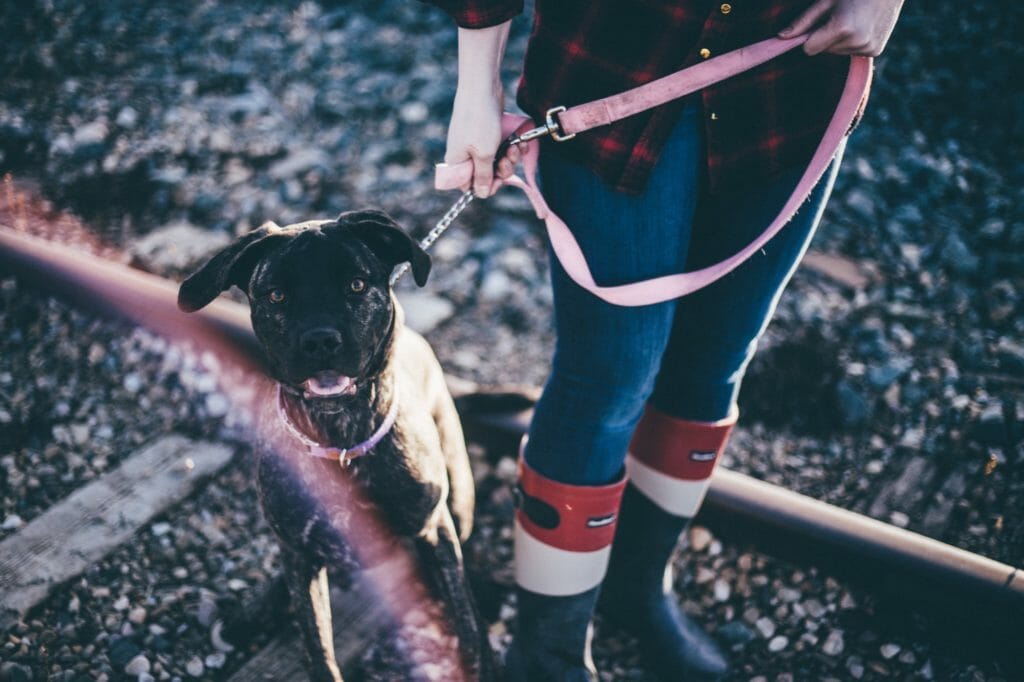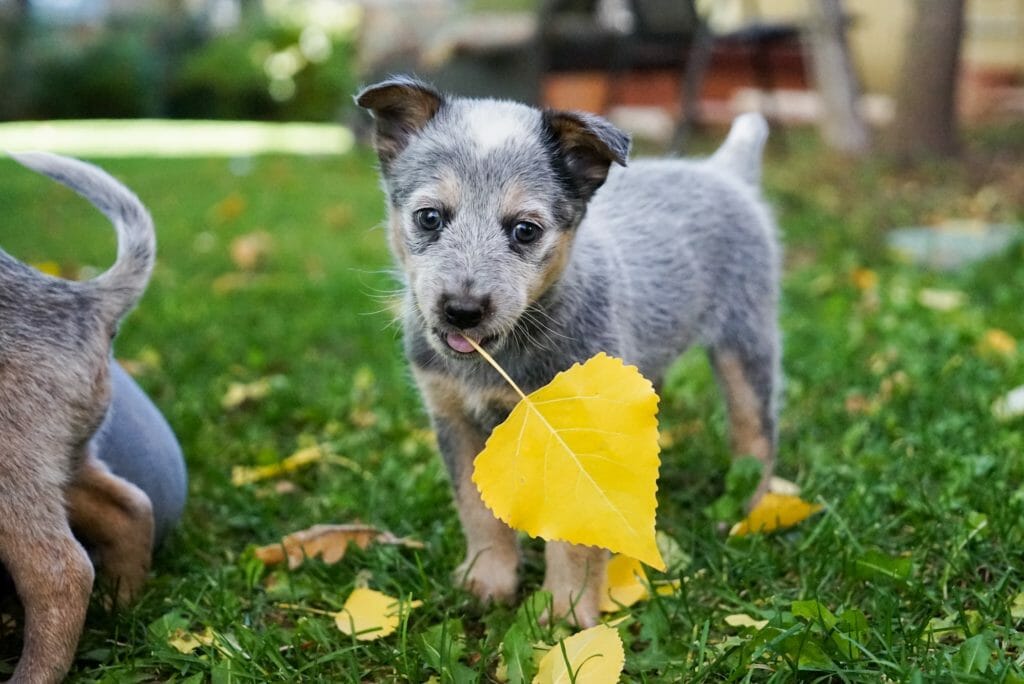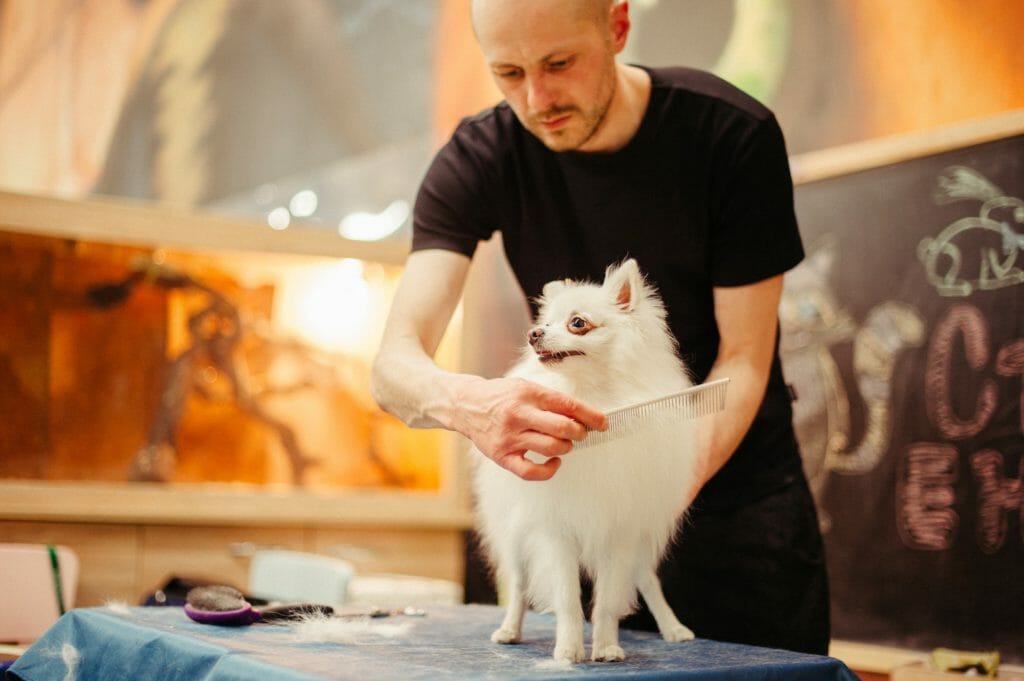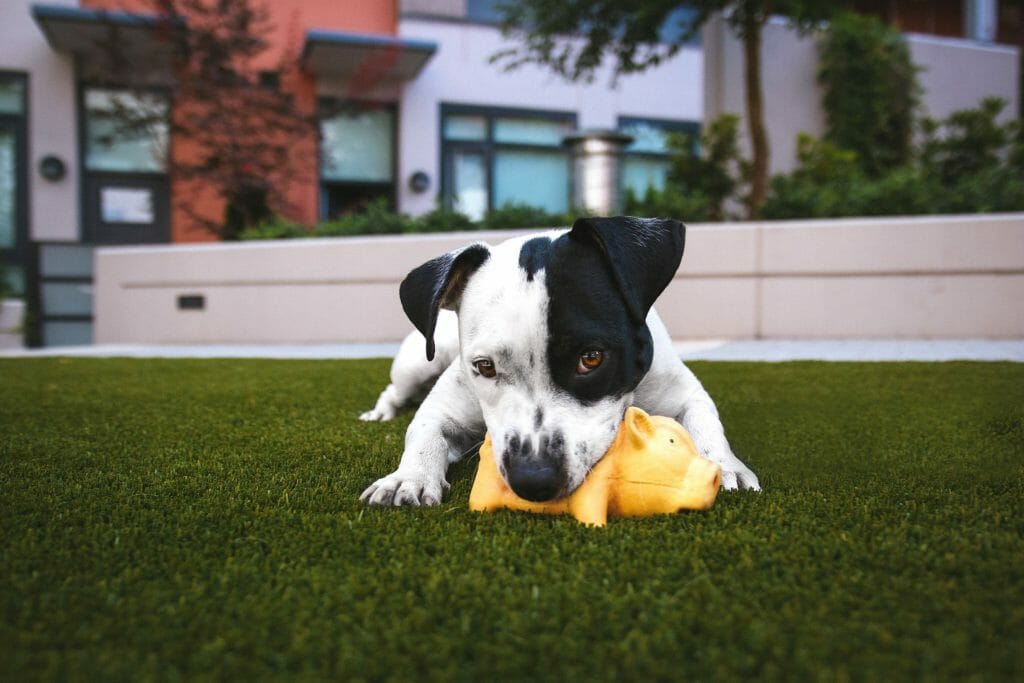Adopting a rescue dog is a question of deep commitment. By the time the initial honeymoon phase is over, your life would have completely changed. Take this time to evaluate how ready you are and plan ahead by taking the time to answer questions such as: who will look after your new dog when you’re off on vacation, are you likely to move house over the next 10 or years or so, do you have the necessary funds to provide for a new dog, and are you prepared to be your dog’s primary caretaker?
If you’re thinking of adopting a dog from the animal shelter, you’ve already taken the first step toward finding a true life-long companion – the right way. But before you jump head first into this new adventure, spend time to understand every possible angle of what’s to come the second you open your home and heart to a beautiful furry friend for life.
In this step-by-step guide to getting a shelter dog, we’ll walk you through everything you need to consider before signing the adoption papers. These are quick tips from shelter rescues such as:
- choosing who will be your dog’s primary caretaker,
- helping your new dog adjust to its new life and surroundings,
- understanding that each rescue dog is unique
- choosing a training schedule and method
- introducing your new dog to house pets or kids
- budgeting your new dog into your lifestyle
- planning your dog’s healthcare schedule
- getting your dog microchipped and licensed
- becoming your dog’s inhouse groomer
- monitoring what your dog eats
- providing daily exercise and entertainment to your dog
- other important reminders
Starter tip: As you browse through this rescue dog adoption guide, jot down points against each step to create a personalised list of adoption action items. By the time you’re done with this guide, you’ll have a complete checklist of things you need to get in order before your dog gets home.
Ready? Let’s get started.
Decide who your dog’s primary caretaker will be

Photo by Priscilla Du Preez on Unsplash
While this doesn’t have to be a role played by just one person, you will need to consider who has the maximum bandwidth to be there for your dog 24/7. This can look like a schedule split between two people, with perhaps some playtime with younger family members who are able to take the dog out for a walk.
Deciding this early on will help ensure maximum continuity and stability in your new dog’s environment; for instance, the primary caretaker will decide your dog’s training schedule as well as method, and explain it to the entire family to maintain maximum consistency in daily life.
If you’re getting a dog because your child or children want one, make sure to have a talk with them about duties and responsibilities. This also translates to involving every family member in the adoption decision, and animal shelter rounds.
Quick tip #1: Include your family in the research needed before adopting a shelter dog while maintaining a firm grasp on who the primary caretaker will be. Plan a primary caretaker schedule so that each week is organised well ahead of time.
Be prepared to help your dog overcome initial fear
Your shelter dog is most likely scared. He’s either still adjusting to the shelter if abandoned recently, or thinks the shelter is home and will be distraught when moved from there. Either way, your new friend would be moving from a comfortable chaos, full of animal and human noises, and a constant stream of volunteers and visitors. Give your pooch some time to adjust to its new home and quieter surroundings. Expecting a shelter dog to come in fully adjusted and ready to be your friend is a big ask. If your rescue appears to be timid, shy or anxious, gently help them ease in without expecting giant leaps in short spans of time.
Be careful about how much you expose your dog to in its first few weeks at home. For instance, meeting a lot of strangers or other animals in highly social settings may trigger anxiety – so be attentive and avoid doing too much too soon. On the flip side, too much alone time or separation may trigger separation anxiety and you’ll need to be gentle with this as well. Abandoned dogs may already have some degree of separation anxiety, and this may be your first real challenge. Be there for your new dog by providing a calm environment and a walking, feeding and resting routine it can learn to trust and expect. If you need to leave your dog alone, work up to longer hours and use food puzzles, stuffed kongs, chew toys or soothing music to calm it down.
Quick tip #2: Decide which area of the house will be your new dog’s rehab sanctuary. Make this space as quiet and comfortable as possible with a bed, a soft plush toy for comfort and perhaps some soothing music.
Understand that each rescue dog is unique
The dog you grew up with, your friend’s dog, your sister’s dog – these are all different dogs with different personalities. Expecting your new dog to embody all your favourite traits from different dogs belonging to family and friends is an easy mistake to make. However, even if your dog shares a breed or experiences with other dogs you love, it may turn out to be of an entirely different temperament.

Photo by Duffy Brook on Unsplash
No two dogs are alike, let alone two shelter dogs. They’re distinct in habbit, appearance and experiences – resulting in intriguing blends of different traits. In each case, they have incredibly unique personalities. Get to know your dog without making any assumptions. Be sure to set aside time in the early days of your new dog’s settling in phase to understand its personality. You want to observe and be as available as possible to not miss a thing. The good news is that most animal shelters vet each rescue dog to the point where they can offer great advice and profiles of the dogs you’re considering to adopt. Look for health and behavior evaluations, and don’t be shy to ask as many questions as you like.
Most shelter dogs tend to be a mix of different breeds, some so unexpected that your dog’s traits may be a complete mystery. Sadly, some people adopt a cute tiny pup and return it once they realise its growing to be a much larger dog that they can’t handle anymore. This breed mystery doesn’t stop at physical traits either. It isn’t uncommon to find a mixed breed dog that displays traits of both herding as well as guarding. Therefore, your puppy may display bred traits that are in sharp contrast with what you might expect. If you’re lucky these mixed traits can be quite endearing; however, if not trained or harnessed well, they may become problematic as your dog grows older. It’s a good idea to seek assistance regarding predictable behaviour – as far as possible – from shelter volunteers and behaviourists.
Quick tip #3: If the dogs you’re considering are known breeds, then do some research on common traits and health conditions. On the flip side, if it’s a mixed breed, then do some research on the closest best-guess breeds in the mix and be prepared for surprises.
Choose a training schedule and method
Much like growing children, your dog – whether pup or fully grown, needs to live within its community. This means you’ll either need to train your dog through pup school or re-train it through adult dog training sessions potentially with a professional dog trainer. Consistency is key as positive reinforcement requires you to give your dog clear signals regarding what is acceptable and unacceptable behaviour. We’re talking potty training, yes, but also behavior around strangers, children and other dogs. A first step would be to ensure your dog understands boundaries at home (crate training might be a good first step for dogs that aren’t housebroken). A dog that understands clear rules and boundaries is great company for anyone.
Be careful before assuming that older shelter dogs are easier to adopt than young pups. Yes, some of them may come housebroken and understand authority and boundaries, but all of this may not instantly translate to your house, your authority or your boundaries. You will still need to put in the time to help your pooch re-learn these behaviours and for this reason you’ll need to commit as much time as perhaps a pup would need.
You’ll also need to prepare yourself for a ‘honeymoon’ period, which essentially means that once your new rescue dog has sussed out its new surroundings while being loving and quiet, it may suddenly revert to previous bad behaviours. You’ll need to look out for such instances and catch them early. Be firm about the spaces your dog is allowed into – couch, rug, bed, garden beds, and be consistent with responding to each time it ventures into out-of-bound areas.
Quick tip #4: Enrol your dog in an age appropriate training school to learn the ropes about what you’ll need to establish for training going forward.
Carefully introduce your new dog to house pets or kids
Animal shelters usually diagnose each rescued dogs social behavior. They recommend whether a dog is likely to get along with other house pets or kids. However, it may be that even the most socially well adjusted shelter dog may not take to your cat or other dog. They may chase other pets to assert territorial dominence in a new environment. If your dog feels like they’re competing for your attention, this behavior may worsen or manifest in disruptive habits such as barking or growling. This applies not just to other dogs, cats, hamsters, or kids – but also to seemingly harmless objects like vacuum cleaners, hair dryers and anything that makes a noise your new dog may perceive as a threat.
Introduce your dog to each person, pet or machine with the same positive reinforcement training methods that you will learn in dog obedience school. Help your dog make the connection between acceptable and unacceptable behaviour by rewarding good habits from the very beginning. Allow a natural pecking order, but give your dog the necessary reinforcement to set it up for success.
Quick tip #5: Give your new dog some space and time while also creating a reward and play environment from the very beginning.
Budget your new dog into your lifestyle
Getting a dog isn’t prohibitively expensive, however you need to be prepared for all the planned and unplanned expenses about to come your way. The amount you pay to get a rescued shelter dog will be lower than something you’d pay a breeder. Even so, since the breed, family history and other health information isn’t available (usually), you may have to spend more once the dog’s with you. Carefully consider and budget expenses for initial veterinary care, training costs (and supplies), obedience classes, grooming, toys, food, treats, transport, warm clothes for winters, and a lot more (bowls, brushes, shampoos, stain removers, etc). Not to mention emergency care expenses that can run into hundreds of dollars.
Aside from money, you’ll also need to budget time for your new pooch. A dog needs constant attention and stimulation, as the next few points mention in detail. Understanding these new additions to your daily life is important and, sadly, owner neglect is often the reason a dog may pick up bad habits. For instance herding, hound, or terrier breeds need more training time and exercise – so consider that if you’re usually short on time. This applies to the dog’s age as well – the younger your rescue dog, the more time it’ll need for training and everything in between. Whether young or old, though, a dog of any age needs your complete attention for at least its first year with you.
Quick tip #6: Narrow down your time and cost budgets and share your preferences with the animal shelters you talk to. Shelter carers will match you to a dog with the right profile, and if that isn’t possible – at the very least you’ll have done your homework for budgeting a new creature into your life.
Plan your dog’s healthcare schedule
Most rescue adoptions come with vet cards that mention all up-to-date treatments. Follow this up with a vet appointment within the first week of bringing your dog home. Look to getting full blood work and allergy tests, along with any pending shots that the shelter would have mentioned at the time of adoption. You’ll find that most shelters are quite prompt with this information on the pet adoption listings, so you’ll be able to prepare all initial treatments well ahead of gotcha day.
This is also a good time to work out a flea, ticks and worm schedule with your dog’s vet. Ask for advice regarding the best schedule and products that meet your lifestyle. Stay on top of critical treatments such as those for heart-worm prevention and regular checks for fleas and ticks.
While animal rescue shelters spay and neuter every dog as soon as they bring it in, you may just need to do this in case you’re adopting a very young pup. This is a pretty crucial step and an important surgery so make sure to investigate the kind of surgery, animal hospital, recovery time and budget needed. Most first time pet owners will also need to know that a neutered or spayed dog will need recovery time away from other dogs outdoors. Ask your animal shelter contact for more information, as well as the vet that’ll be treating your dog.
Quick tip #7: Choose a local vet and get a first check-up with the clinic/hospital from your rescue dog’s very first week with you.
Checklist for healthcare essentials:
- Is your dog spayed or neutered? If not, then seek your vet’s advice.
- Are all vaccines up-to-date? If not, start a schedule with your local clinic.
- What’s your dog’s current heartwork schedule?
- Heigh and weight check against recommended nutrient intake.
- Overall initial check for eyes, ears, teeth, fur and nose.
Sample spreadsheet template:
Plan to get your dog microchipped and licensed
It’s a good idea to get your dog a tag with its name and your contact details on it for emergencies or accidents. Make sure to attach this to the collar that is on your dog at all times. Additionally, look into getting your vet to microchip your dog as this is the safest way to ensure your dog never gets lost. Don’t forget to update the tags and information attached to the microchip details if you ever move house.
Different states, cities and councils also have different rules and regulations for pet licenses. Sometimes, these can be related to your new dog’s breed; seek your local clinic’s advice about any necessary licenses and registrations.
Quick tip #8: Ask your vet about microchipping (or read up on the 7 reasons why you should microchip your pet!), and get a dog tag printed at your local animal store. Confirm which licenses you’ll need to apply for within your dog’s first week home.
Prepare to become your dog’s inhouse groomer
Don’t forget to plan ahead for your dog’s dental health and nail grooming as well. It’s important to brush your new friend’s teeth every now and then, as well as ensure its nails are trimmed. Be sure to reward your pooch every time they let you brush their teeth and trim their nails, and work up to each such appointment becoming a positive experience for both of you.

Photo by Александр Гросс on Unsplash
It’s important to take care of your dog’s fur by keeping it healthy and free of any matting. Simple regular habits like brushing your dog’s fur, and washing once in a week or two – without removing important natural oils from their fur will go a long way in ensuring that your dog doesn’t get too scratchy or uncomfortable in its own fur.
Figure out a calendar of shared grooming responsibilities from the very beginning will help everyone in your family understand little pooch’s habits and preferences. Wash and clip time can be a great opportunity to spend some quality time with your new dog as well. Take this time to create a safe space where you can check for any bruises, bumps or anything else that may need a vet’s attention.
Quick tip #9: Establish a wash, nail, and toothbrush routine early on so your new friend understands that their new home comes with certain conditions in grooming and maintenance. Get more tips from our dog home grooming post!
Get ready to be hyper aware about what your dog eats
Dogs explore the world with their noses and tongues. For them, a new environment is full of new things to understand and this means licking, sniffing, chewing, spitting and sometimes eating. Young pups are the worst offenders to their own delicate constitutions and as a new pet parent your first responsibility is that your new dog doesn’t eat something harmful. You’ll need to be aware of its dietary rhythms, how much food’s eaten, how often has it gone to toilet, how much water is it drinking, and more. Thankfully, once dogs get used to new food and toilet routines, they begin to tell you when they need to eat or are upset (and their tummies will tell you when they’re upset soon enough). However, until your dog is comfortable enough to make these associations and begin to communicate them to you, you’ll need to stay vigilant and standby on alert.
Here’s a list of things your dog shouldn’t eat:
- Anything with Xylitol – an artificial sweetener found in sugar-free products like gum and some nut butters
- Any chocolate or caffeine – or any other products that contain methylxanthines
- Onions, garlic, chives – in all forms
- Any raw meat (esp. with sharp bones) or eggs that could contain salmonella and E. coli.
- Grapes or raisins
- Salty snacks like potato chips and pretzels
- Nuts such as pecans, walnuts, and macademias
- Alcohol and human medications
Quick tip #10: Check out our can dogs eat category, and keep all unsafe foods and ingredients locked away in places your pooch can’t access.
Plan your new dog’s daily exercise and entertainment
Dogs need constant attention for exercise, stimulation, and entertainment. Left to themselves, any dog – whether a rescue dog or not – will become destructive and/or lethargic. If you’re committed to bringing a new dog home, make sure to accept and plan for how you’ll provide it with daily exercise and stimulation. The good news is that most dogs will easily entertain themselves for large portions of the day if given the right toys and comforts. However, it’s a good idea to dog-proof your home, especially as your new charge is exploring new surroundings. This will include hiding sharp things, covering power points that are usually switched on, and generally putting away anything that your dog may think is a toy.

Photo by Justin Veenema on Unsplash
Introduce your new dog to stimulating toys that have interesting textures and tastes for chewing, and/or make squeaky noises. Especially young pups need toys with interesting textures as they grow into their teeth and gums, in fact some toys are designed to comfort a young dog’s teething gums. Couple this with daily ‘playtime appointments’ with your dog (pencil these into your calendar till it becomes a habit) and ensure you help burn off energy to help your pooch work up an appetite every day.
Add a clever hack to keep your puppy constantly entertained – rotate toys and stimulants so that they don’t get too boring. Make sure only a few toys are available at a time and take care to hide the ones not on rotation well away. Look to having one of each type available – these can range from chew, play, interactive, fetch, puzzle to simply comfort toys. You can also create a pet-friendly backyard!
Quick tip #11: Plan your dog’s playtime by choosing a park and time in the day, and share this schedule with any co-parents to maintain consistency.
Never leave your dog in a hot car or chained outside
Sadly, a lot of people think it’s acceptable to leave their dogs locked up in cars on hot days or chained outside in the heat, cold or rain – despite well documented evidence that such actions cause physical and psychological harm. It’s important to understand and explain to any other family member who may be charged with babysitting your new pooch that these are unacceptable ways to contain a dog and are reportable offences. Be sure to keep phone numbers for animal control or local authorities if you ever see this happening to another dog as well.
Quick tip #12: Keep the number for local animal authorities handy at all times. Keep your pets safe indoors especially in extreme weather conditions.
Tying it all together…
When all your homework is done and every detail completed, you’ll find that your new rescue dog will settle into your home and routines very well. As long as you establish boundaries, accepted behaviours and finish all health and paperwork requirements early on – you’ll find that adopting a shelter dog can be a very rewarding and fun experience. Be patient for your new dog to settle into its new environment, and don’t be harsh on yourself if you face challenges along the way.
By now you would have:
- Included your family in the research needed to adopt a shelter dog and decided on a primary caretaker schedule.
- Decided on and created an area in the house that will be your new dog private sanctuary.
- Done some research on your dog’s (best-guessed) breed traits and health conditions.
- Enrolled your dog in an age appropriate training school.
- Settled on a suitable reward and play environment to establish boundaries.
- Done your homework for budgeting a new creature into your life – with respect to both time and money.
- Chosen a local vet and booked a first full health check-up and vet consult for your dog’s first week home.
- Asked your vet about microchipping (procedure and budget), and bought a dog tag printed at your local animal store.
- Confirmed which licenses you’ll need to apply for within your dog’s first week home.
- Planned a wash, nail, and toothbrush routine for your new dog.
- Compiled a list of yes and no foods for your dog and kept all no foods locked away in places little pooch can’t reach.
- Chosen a park and time in the day for exercise and play, and shared this schedule with any co-parents to maintain consistency.
- Listed numbers of local animal authorities handy at all times in an area accessible to everyone in the house.
- Planned a designated area for any outdoor pets in cases of extreme weather conditions.
Above all, congratulations on this important decision! Read our puppy starter kit post with a complete list (with budget) of things you’ll need to buy for your new rescue dog.
Leave a comment
Your email address will not be published. All fields are required.